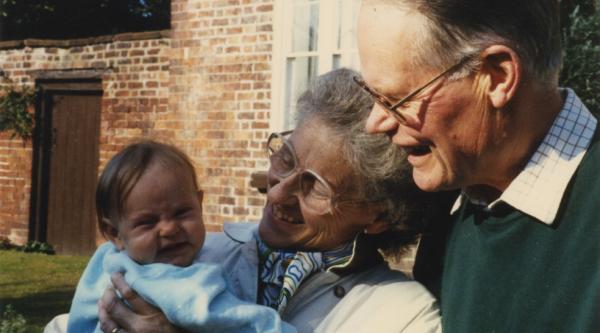Dementia with Lewy bodies (DLB): what is it and what causes it?
Dementia with Lewy bodies (DLB) is a type of dementia caused by Lewy bodies, which are clumps of protein in the cells of the brain. Read more about what DLB is, and who gets the condition.
- You are here: Dementia with Lewy bodies (DLB): what is it and what causes it?
- Getting a diagnosis of dementia with Lewy bodies (DLB)
- Symptoms of dementia with Lewy bodies (DLB)
- Treatments and support for dementia with Lewy bodies (DLB)
- Dementia with Lewy bodies (DLB) – useful resources
Dementia with Lewy bodies (DLB)
What is dementia with Lewy bodies?
Dementia is caused by different diseases that affect the brain. Lewy body dementia is caused by Lewy body disease.
In this disease, tiny clumps of proteins known as Lewy bodies appear in the nerve cells of the brain. Lewy bodies are named after FH Lewy, the German doctor who first identified them.
Lewy bodies cause a range of symptoms, some of which are shared by Alzheimer’s disease and some by Parkinson’s disease. For this reason, DLB is often wrongly diagnosed. About 1 in 10 people with dementia has DLB.
Watch this short video about dementia with Lewy bodies:
What causes dementia with Lewy bodies?
It is not yet known why Lewy bodies develop in the brain or exactly how they cause dementia. But we do know that Lewy body disease:
- can cause different symptoms depending on what parts of the brain have the biggest build-up of faulty proteins
- reduces the levels of important chemicals needed to send messages around the brain
- breaks the connections between nerve cells, eventually causing these cells to stop working
- usually develops over a period of many years – typically when a person is approaching old age. Lewy bodies can be developing in the brain for a long time before any symptoms show.
Having Lewy body disease doesn’t mean that a person’s dementia is only caused by the build-up of Lewy bodies in their brain.
Many people with DLB also have a build-up of other proteins that cause Alzheimer’s disease. This is common in people over about 80 years old. For people with both DLB and Alzheimer’s, dementia symptoms are often more severe and progress more quickly.
Parkinson's disease
Parkinson’s disease is also caused by a build-up of Lewy bodies in the brain. DLB has a lot of symptoms in common with Parkinson’s disease. Both cause problems with:
- thinking
- movement
- mood
- how well the body works.
In DLB, the symptoms of dementia begin before or around the same time as the person develops problems with movement.
For people with Parkinson’s disease, symptoms of dementia often develop many years after the movement problems begin.
Who gets dementia with Lewy bodies?
Around 5% of people with a diagnosis of dementia are recorded as having DLB, but there is good evidence that the condition is under-diagnosed. Scientists think DLB may account for up to 20% of all dementia.
Dementia with Lewy bodies affects men and women roughly equally. As with most other types of dementia, DLB becomes increasingly common over the age of 65. It can also affect people younger than this.
There is not much evidence that anything we might be exposed to during our lives increases the risk of DLB. Having a traumatic head injury (or repeated injuries) may increase the risk of developing Parkinson’s disease later in life, but it’s not known whether this also applies to DLB.
Almost all people who develop DLB have a ‘sporadic’ form, which means that the main cause is unknown. Some genes may increase the risk of developing DLB.
Accessible versions of this information
Watch this signed version of our information on Lewy body dementia:
Need help finding dementia information?
Find the information and support you're looking for with our free online tool.
- Page last reviewed:









